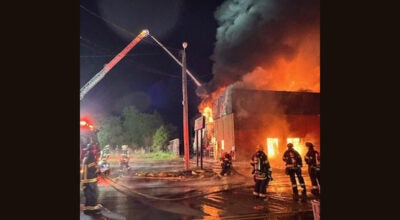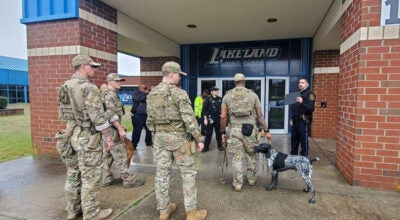Suffolk Public Schools makes gains in math, science SOL pass rates
Published 2:44 pm Tuesday, August 13, 2019
Suffolk Public Schools made significant gains in state math and science tests, stayed mostly steady in reading and showed declines in history and social sciences, according to data released Tuesday by the Virginia Department of Education.
Across the division, math Standards of Learning pass rates increased from 75 percent in 2018 to 83 percent in 2019. In science, pass rates increased from 80 to 83 percent over the same time period.
“Math is where we’re really celebrating the success,” said Director of Elementary Leadership Pam Connor at the School Board’s vision planning meeting last Thursday, where it was announced all of the division’s schools likely will see full state accreditation this year.
Seventh-grade math students at John Yeates Middle School saw their pass rates increase from 53 percent last year to 89 percent. Forest Glen (65 to 83 percent), John F. Kennedy (49 to 67 percent) and King’s Fork (53 to 63 percent) middle schools all saw gains. Students at Col. Fred Cherry, in its first year, had a 68-percent pass rate.
Sixth-grade math pass rates generally stayed steady or increased slightly. Col. Fred Cherry had the highest pass rate among eighth-grade math students at 91 percent, while eighth-grade math pass rates went up at all other middle schools.
Algebra I pass rates went up from 61 to 89 percent at King’s Fork High School and from 63 to 86 percent at Nansemond River High School during the same time period. Algebra II pass rates at the two schools also went up by more than 10 percentage points.
At King’s Fork, Algebra II pass rates went from 85 to 97 percent, and at Nansemond River, they went from 74 to 91 percent. Algebra I and II pass rates declined slightly at Lakeland High School. There, Algebra I pass rates went from 84 percent in 2018 to 81 percent in 2019, and for Algebra II the pass rates went from 80 to 68 percent.
Geometry pass rates across all three high schools went up — from 80 to 87 percent at Nansemond River, from 66 to 82 percent at King’s Fork and from 61 to 81 percent at Lakeland.
Suffolk’s elementary schools saw a significant uptick in their math pass rates.
Grade 3 math pass rates went up at all but three of Suffolk’s elementary schools, with Elephant’s Fork’s pass rate jumping from 60 percent in 2018 to 80 percent in 2019. Booker T. Washington (59 to 54 percent) and Florence Bowser (89 to 81 percent) went down, while Mack Benn Jr. remained unchanged at 67 percent.
Grade 4 math pass rates rose at all but one school, with the biggest gain coming at Mack Benn Jr., which went from a 61-percent pass rate in 2018 to 75 percent in 2019. Northern Shores’ pass rate went down slightly, from 88 to 87 percent.
Fifth graders showed improvement at all but one school, with Kilby Shores’ pass rate going up from 71 to 88 percent. Three other schools — Creekside, Oakland and Elephant’s Fork — had pass rate gains of at least 10 percentage points.
Eight of the 11 elementary schools in the city had science pass rates of at least 80 percent. Two of the three that did not — Elephant’s Fork and Booker T. Washington — still improved. The eighth-grade science pass rates went down at King’s Fork (79 to 74 percent) and John F. Kennedy (72 to 62 percent) middle schools, and rose slightly at John Yeates. Students at Col. Fred Cherry had an 86 percent pass rate.
In Suffolk, reading pass rates stayed steady at 77 percent, while pass rates for history and social sciences and writing dipped. In history and social sciences, the pass rate went from 80 percent in 2018 to 76 percent in 2019, while in writing, pass rates dropped from 76 percent in 2018 to 72 percent in 2019.
“(In) writing, we did not make the gains that we had hoped for,” Connor said. “But our English department has already taken this information and put strategies in place to support that.”
In English, both reading and writing is tested, and while fifth-grade students used to be tested in writing, that is no longer the case. Only students in eighth and 11th grades get tested on writing. It is, however, still a focus across the curriculum and grade levels from pre-K onward, she said.
“The writing is a two-part test,” Connor said. “There’s a writing prompt and there’s also a multiple choice test. Our students did well on the writing prompt, where they’re actually doing direct writing. The multiple choice is the area of focus and will remain that for this year.”
Statewide, 78 percent of students passed reading SOL tests in 2019 compared to 79 percent the year before, and in writing, the pass rate dropped slightly to 76 percent. On new math tests introduced in 2019, 82 percent passed versus 77 percent on the previous tests in 2018. Science pass rates remained unchanged at 81 percent, and history and social science pass rates declined from 84 percent last year to 80 percent this year.
“In social studies, we maintained in the middle schools,” Connor said. “We had a dip in the elementary and high (schools). … The state also had a dip in that as well.”
The new math SOL tests came about as revisions to state math standards were approved by the state Board of Education in 2016. The new tests were an end to the three-year transition period to the revised standards.
“The achievement in a school, a division or in the commonwealth as a whole must be viewed in the context of these changes in student test-taking patterns, standards and assessments,” Superintendent of Public Instruction James Lane said in a statement. “These changes were significant, and performance on last year’s SOL tests marks the beginning of new trend lines in mathematics, science and history.”
Lane said there would be an increased focus on improving reading skills for all students and on addressing widening achievement gaps in reading, in particular at the elementary level.
The Department of Education will announce school accreditation ratings in September, though based on preliminary data, all Suffolk public schools are fully accredited.






